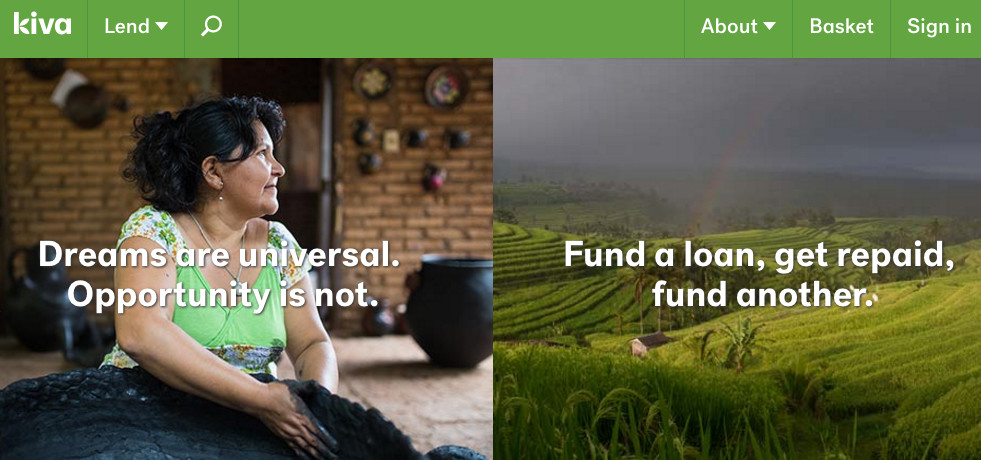
Kiva Helping to Seed Smallholder Finance Models Filling a Gap in Africa
Spending a day with Kiva is uplifting and energizing. I’ve had the opportunity to spend time with members of the Kiva team, both at their headquarters in San Francisco and in the field visiting partners who are operating in some of the most impoverished and excluded areas of the world.
Granted, it’s not a struggle to be enthusiastic about an organization that partners with innovative microfinance institutions and social enterprises to help lift people out of poverty. But what makes each visit with Kiva truly memorable is the passion of its people for the work they do and their deep commitment to meeting the needs of their field partner organizations, no matter how challenging the context.
For these reasons, and others, the Foundation has just entered into a five-year partnership with Kiva to help drive innovation in African agricultural finance through their field partners, many of which are social enterprises.
This is the first time the Foundation has worked with a peer-to-peer lending platform, which makes Kiva an original in our Rural and Agricultural Finance portfolio. By providing financial service providers in Africa with capital, Kiva is helping to seed smallholder finance models that are filling a gap not being met by existing financial services.
Why do we think Kiva is unique?
Kiva offers crowd-sourced capital for on-lending to microfinance institutions (MFIs) and other providers of credit when nobody else is interested in taking the risk, thus filling a critical funding gap. The 0% interest capital that Kiva provides allows its field partners to pass those savings on to clients. The interest rate charged by Kiva’s social enterprise partners for their loans is low compared to the industry average among MFIs. In addition, Kiva uses its low-cost capital to drive social lenders to poorer and more vulnerable client segments. This strongly aligns with the Foundation’s focus on client-centricity and reaching out to excluded populations in rural areas.
Kiva’s capital is also unique in its flexibility and tenure. Many organizations have told us that access to Kiva’s lending platform has enabled them to reach new, excluded segments of clients, test new products that cater to the specific needs of smallholder farmers, and weather unexpected crises such as crop failure that affect their borrowers’ ability to repay on time.
- Commitment to social impact
Many partners cite this as one of the major advantages of working with Kiva. Impact-related metrics are collected through a scorecard that is deployed across all field partners. By integrating the Global Multidimensional Poverty Index (MPI) data into this scorecard, Kiva is able to determine which field partners are working in areas with the deepest levels of poverty. Going forward, this tool will allow Kiva’s field staff to think more critically about how their portfolios of field partners are structured.
- Platform
Often imitated, never duplicated (as they say), Kiva’s peer-to-peer lending platform changed the microfinance sector when it launched in 2005. By introducing a new paradigm – between investment and charity – Kiva has proved that millions of individuals are motivated to lend without profit and with a high tolerance for risk. In 2009, Kiva was the first not-for-profit to open access to its application programming interface (API), thus enabling any developer in the world to build tools that directly integrate with their platform. This has accelerated Kiva’s functional evolution and broadened its audience reach.
The Foundation’s partnership with Kiva will help it to drive product innovation in agricultural finance through social enterprises, improve the capacity of these enterprises to design and distribute innovative products and services, and sharpen Kiva’s impact tracking tools. We are proud to be contributing to this next phase in Kiva’s evolution, as it continues to be one of the financial inclusion sector’s most innovative players.


